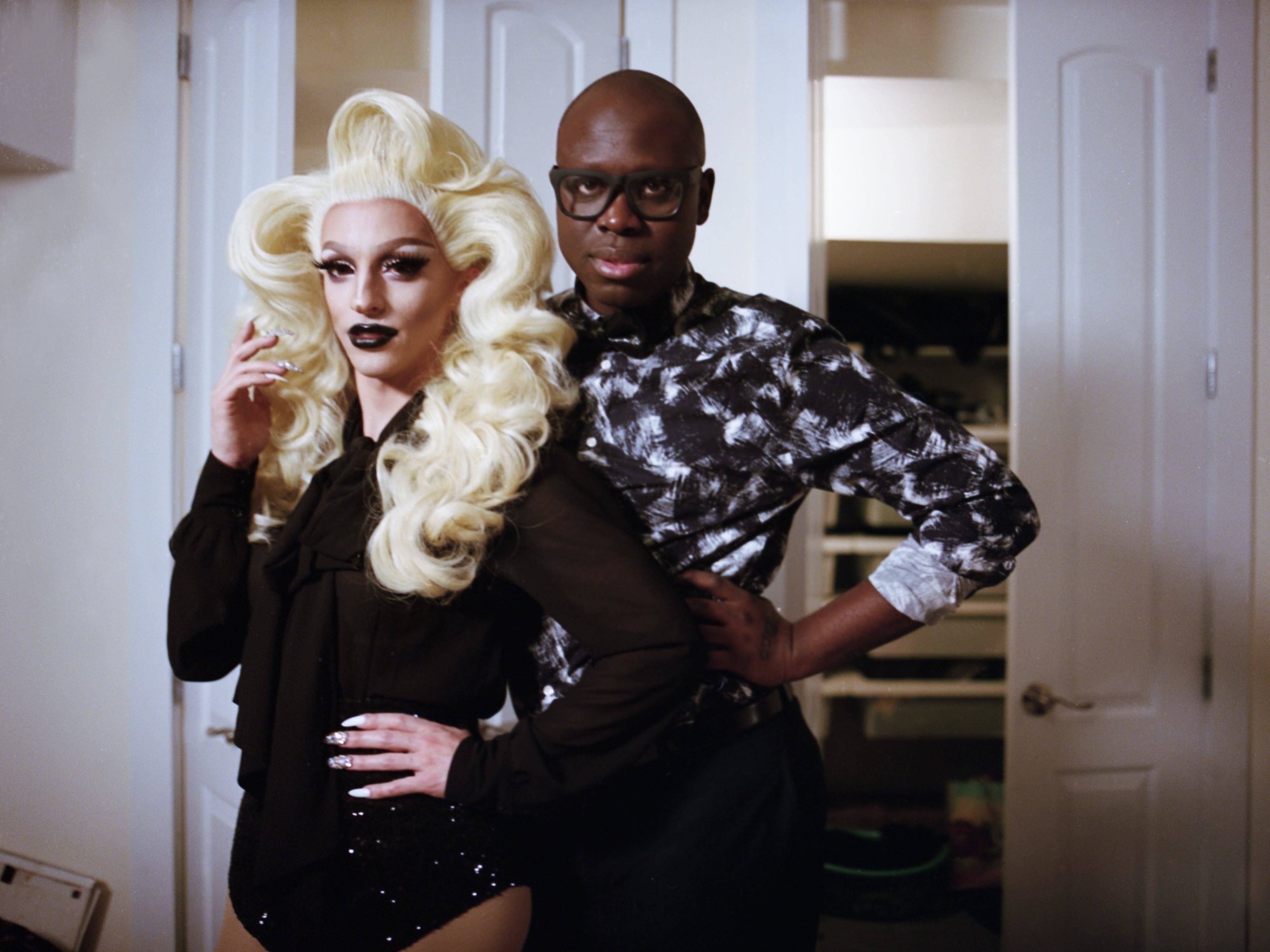There are the families we are born with, and there are those we create. In New York City, home to creatives, queers, outcasts, and strivers of all kinds, our chosen families can often be more important than our biological ones. These fierce, intimate bonds are essential to the culture of vibrant creative communities. Take for example Nan Goldin’s Ballad of Sexual Dependency, the photographer’s documentation of her adopted tribe. Or Paris Is Burning. In one memorable scene of the documentary, Angie Xtravaganza, Willi Ninja, and Pepper LaBeija break down the responsibilities of being a house mother.
A nuanced form of artistic expressivity that explodes the possibilities of gender play and performance, drag has also fashioned its own familial structure. At the head of this matriarchy sits the drag mother, an experienced queen who guides a girl’s transformation into royalty through mentorship, mastery, and example. In celebration of Mother’s Day, we’ve profiled three New York City-based drag mother-daughter duos: mama Sharon Needles and Aquaria, Bob the Drag Queen and Miz Cracker, and Merrie Cherry and Hannah Lou. Their views on families and the future of drag vary as greatly as their dynamic, expressive styles.
Bob the Drag Queen has been a force on New York City’s stages and activist front lines since first doing drag at a Pride celebration with a group of friends. America discovered Bob’s humor, honesty, ingenuity, and firmly rooted self-confidence last year, when she emerged as the undisputed front-runner of RuPaul’s Drag Race‘s eighth season, and ultimately claimed its crown. Miz Cracker —the Harlem-based drag comedienne and writer who calls Bob her mother— already knew all of these sides of Bob well. Miz met Bob in her 20s — a little drunk during a snowstorm — and offered to help him carry the bookshelf he was hauling into his apartment as a chance to get to know him better. Once inside, she discovered Bob’s collection of wigs, gowns, and as Season 8 fans can imagine, purses. The rest is herstory.
“What I most admire about Bob is her straightforwardness. Sometimes it’s really difficult to deal with because you don’t want to hear the unvarnished truth,” Miz explains to i-D. “For example, people will say ‘You came to my show and you weren’t laughing,’ and Bob says, ‘I never laugh unless I can’t help it.’ And that’s the way that Bob is. Bob never tells a lie. She doesn’t diffuse you in any way. She won’t even pony up a laugh or a compliment if it’s not completely felt. Sometimes that can be hard, and sometimes that can be great. Because when she’s like, ‘that was incredible,’ she would never say anything close to that phrase if she didn’t absolutely mean it.”
Before Drag Race, Bob had built an extensive fan base in the city, largely thanks to her winning humor and direct-action activism. In 2010, she began staging weekly wedding ceremonies in Times Square with her sisters in drag, protesting for LGBTQ+ equality. In a Slate piece, Miz recounted how Bob always encouraged her to come join the demonstrations, even when she was hesitant to try drag. She later launched her drag career at one of Bob’s Marriage Equality marches. “[A drag mother’s] first and most difficult job,” Miz writes, “is to teach her daughters that they have something remarkable within them, something worth bringing out.”
For Bob, “bringing out” carries extra importance. Before beginning drag, Bob grew up doing theater in Georgia, before booking regular standup comedy gigs, and touring on the slam poetry circuit. Humor, intuition, and experimentation are what makes Bob’s drag so electric. “Bob has an idea, and the next day she rolls it out,” Miz explains of a value her mother has instilled. “Doesn’t matter if it’s held together with duct tape, or if the backup dancers just learned it, it’s gonna go. There’s this value of the constant rolling out of ideas, and not sitting at home gluing rhinestones to something that doesn’t need rhinestones.”
“Don’t do drag just in your apartment. Do drag and leave your home,” Bob says. “Drag is interactive; drag is protest. When you walk down the street and you’re in drag, you may think to yourself that no one realizes it, or that you’re just a drag queen walking down the street. But you’ve probably changed someone’s life just by being a drag queen walking down the street.”
And this constant act of bringing out — of ideas, looks, concepts, actions — expands the possibilities of what drag can be. That ever-broadening definition is exposing drag to new people. “One of the big movements that I see and that I’ve been writing about lately is drag absorbing new groups of people,” says Miz. “And it’s now like a gay rite of passage. In 1968, there were 75 working drag queens in the whole nation. Now, everyone that comes out in New York is like, ‘I’m doing a drag competition this weekend, this is my name, these are my inspirations,'” Miz explains. “Drag will no longer be the sacred ground of queer people in big cities. Drag is going to be something that is incredibly diverse and much more common.”
Watch more in the Drag Mother’s Day series.
Credits
Text Emily Manning
Photography and film Barbara Anastacio
